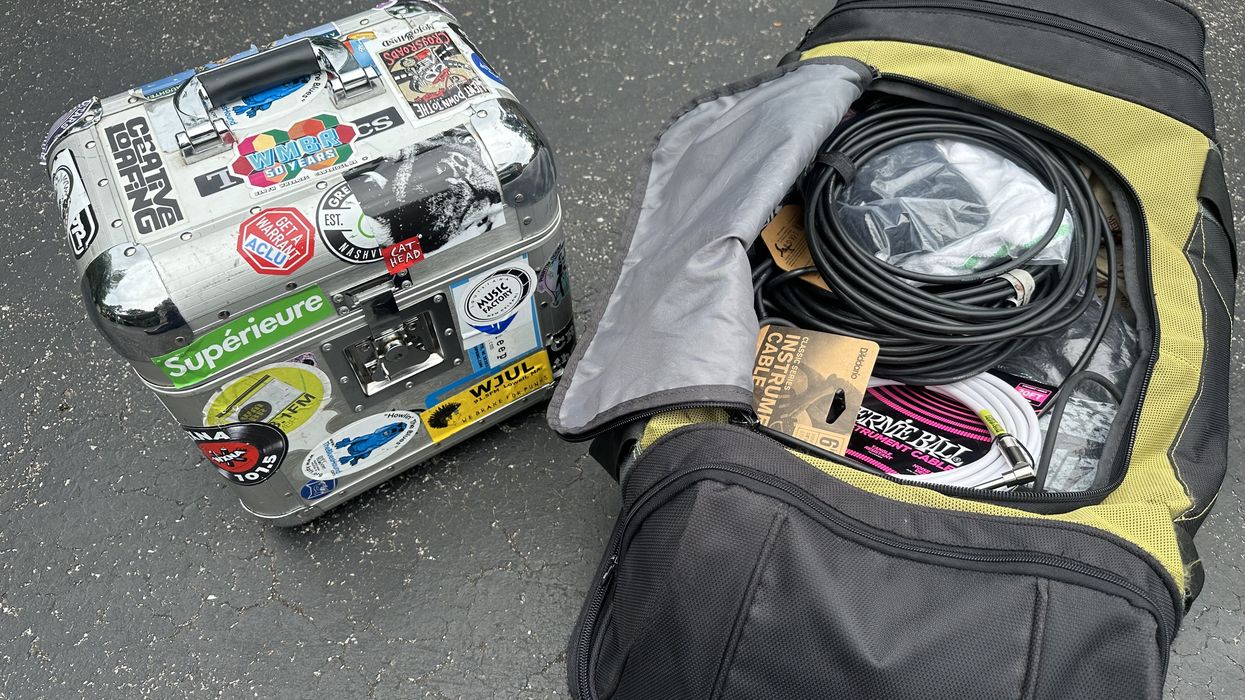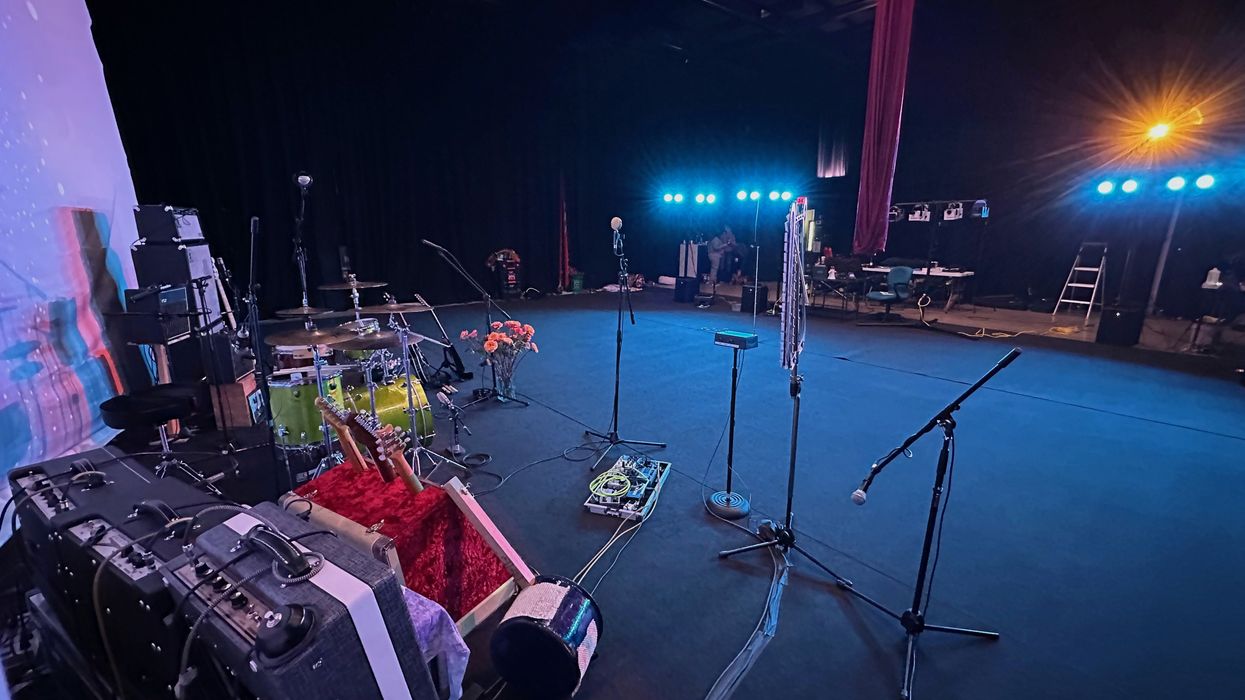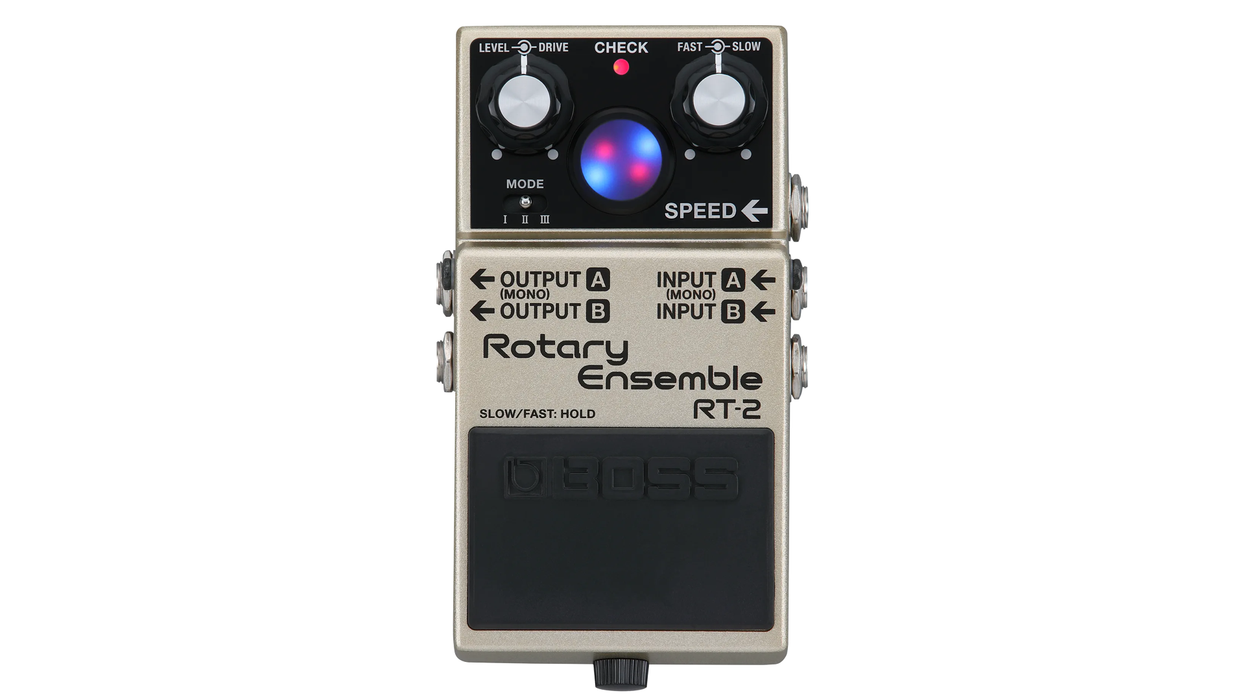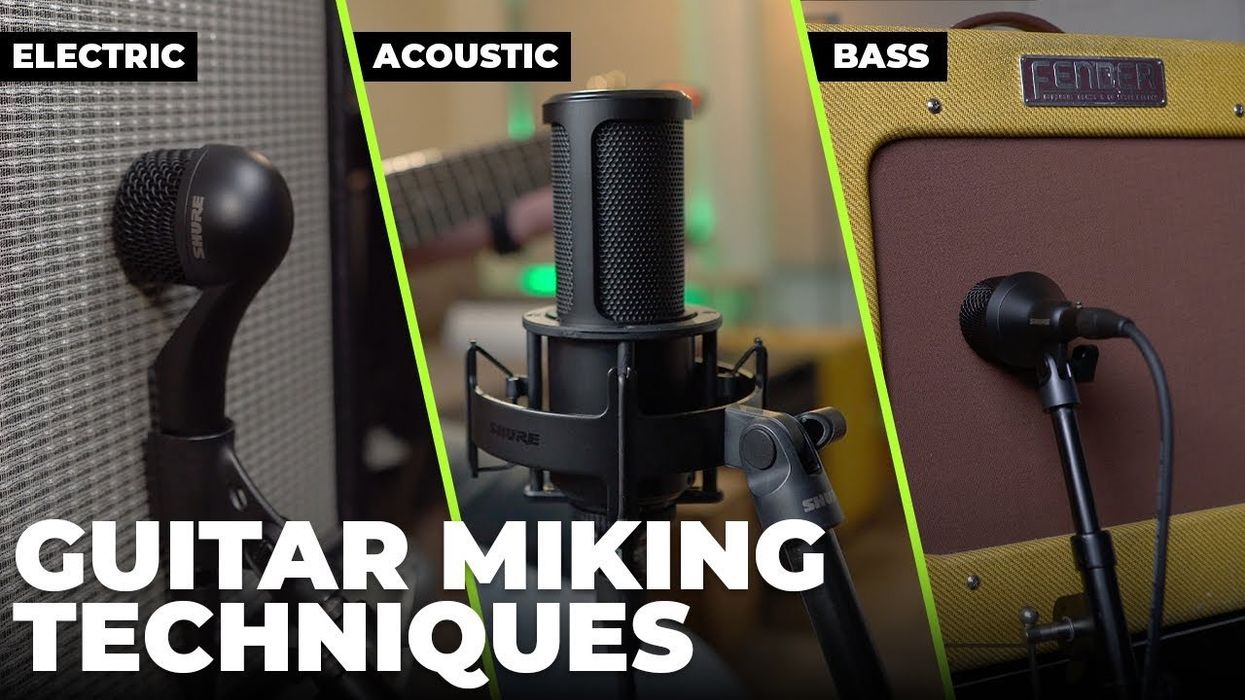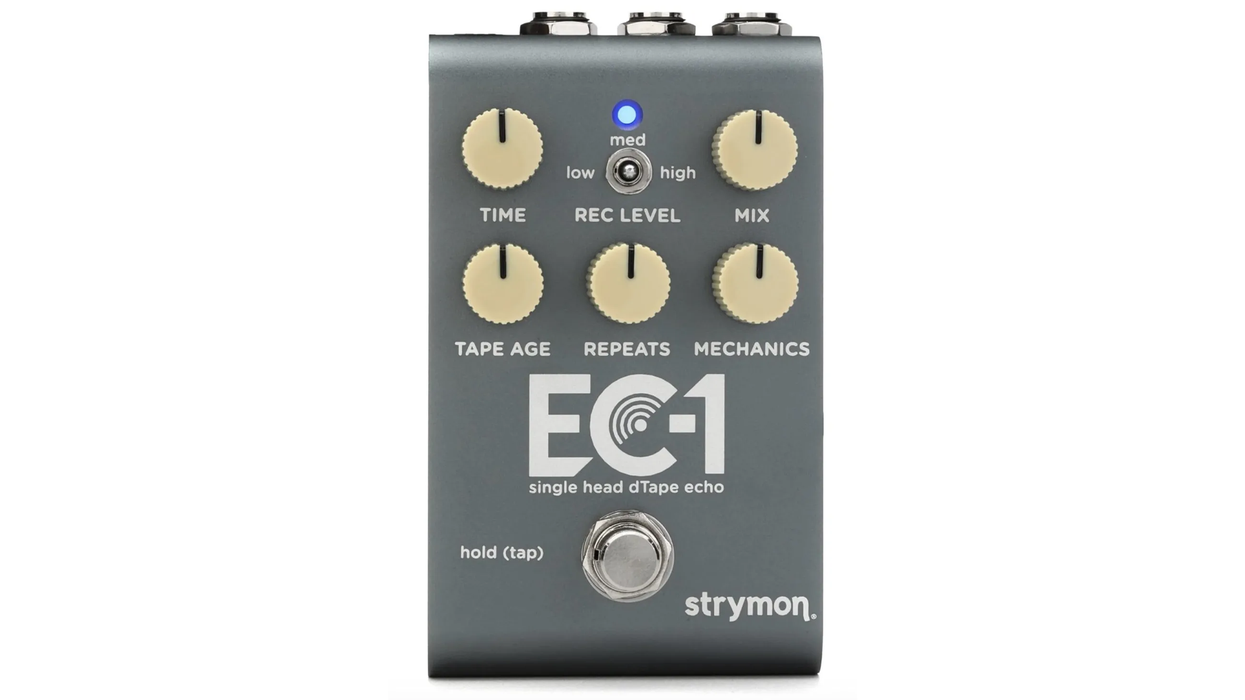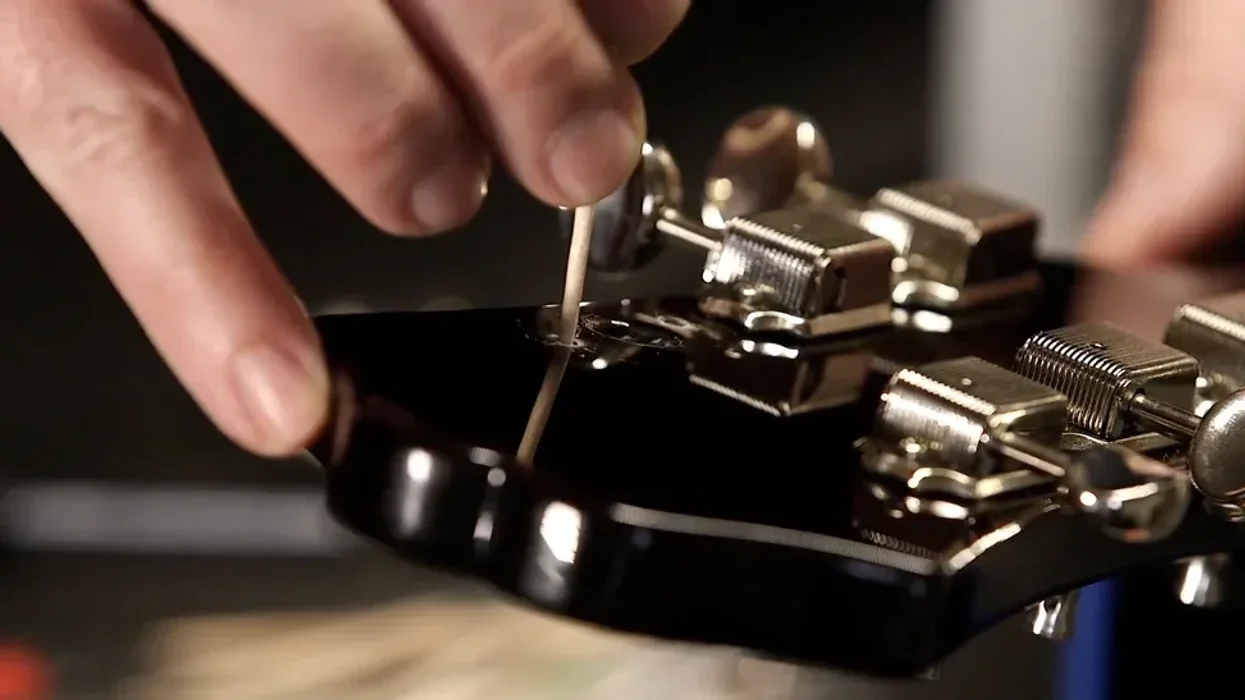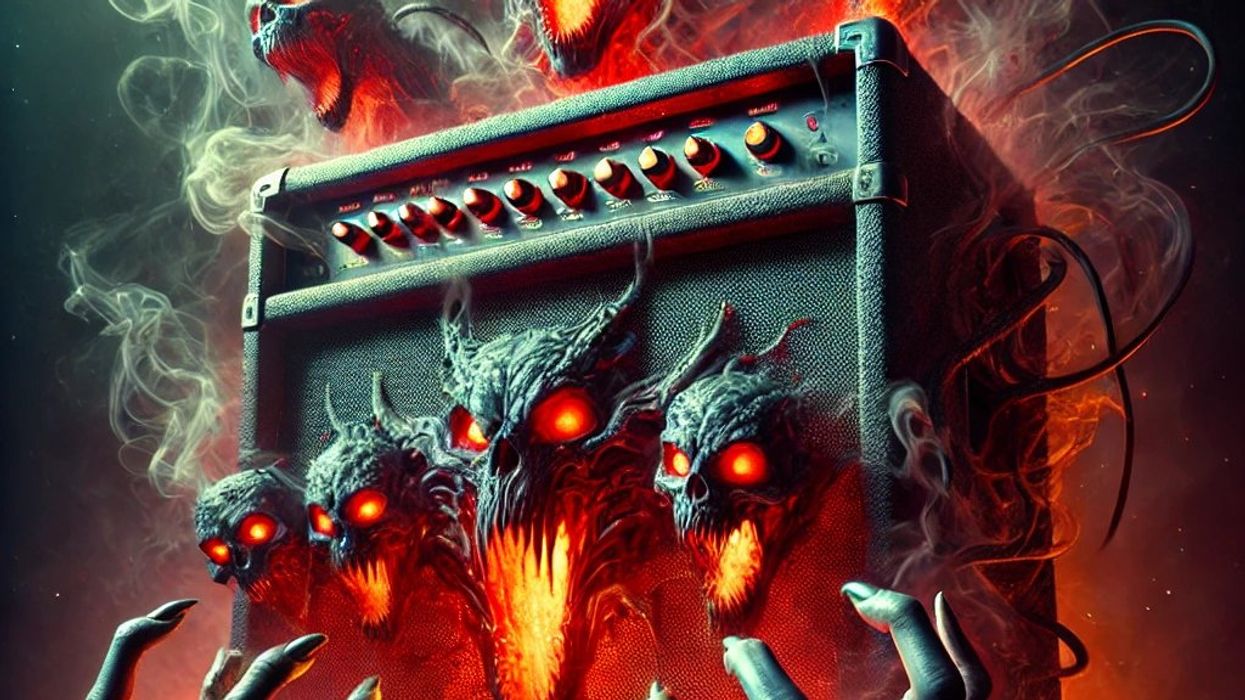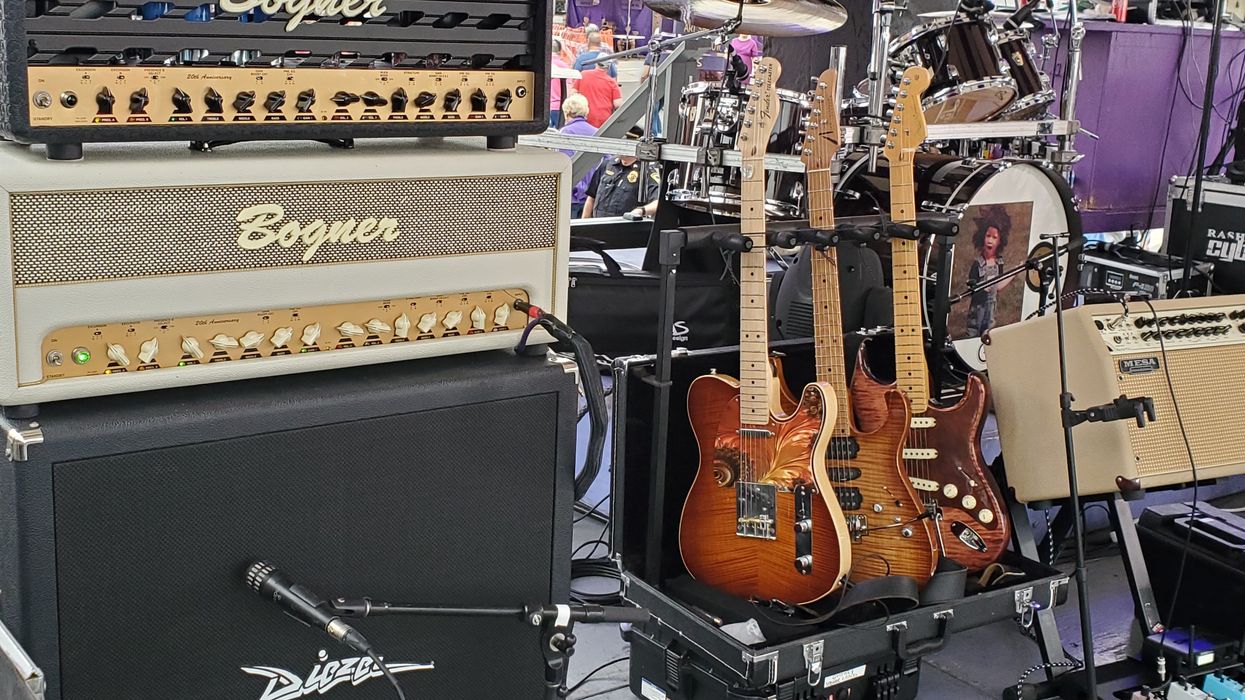Anyone who’s seen a spy flick or caper movie knows about go bags—the always-packed-and-ready duffles or attachés filled with passports, a few weapons, and cash that’s ready to grab and run with when the hellhounds are on your trail. As guitar players, we also need go bags, but their contents are less dramatic, unless, maybe, you’re playing a Corleone-family wedding.
We need the essentials for gigs in our go bags, and that's somewhat subjective. At one point, for me, that included a bottle of Jameson, but no longer. I guess that’s a way of saying that our priorities change, so over time the contents of our go bags will, too.
Now, I have two go bags: a small one for local gigs or quick weekend runs, and a big, fat, roller-wheel bag for short tours or special event gigs, like album-release shows or festivals. The small bag is actually a silver box covered with stickers, and this is what it has inside: two sets of GHS Boomers .010 strings, a couple picks, a string winder and pointy-nose clippers for string replacements, two guitar cables, an extra clip-on tuner, a couple of 9V batteries, a slide, a capo, and a few 6" guitar pedal cables. If I’m not using a backline, I also tuck in an AmpRX BrownBox. (I’ve clocked 127 volts coming out of the walls in some Nashville clubs.)
The Big Black Bag, as it’s named, carries all of the above and a lot more. Ever been to a gig where an adequate number of mics were promised … and instead there were none? Or where a bandmate forgets a guitar strap or cables? Or the temperature’s pushing into the high 90s and there’s not a stage towel to be found? Those problems and more have fueled the packing of my Big Black Bag. Here’s what’s inside: six guitar cables, a half-dozen 9V batteries, six pedal cables, two guitar straps, an extra TU-3, five stage towels, a paint brush (for improv), four microphone cables, an XLR to RCA adaptor, an acoustic guitar soundhole plug, two rolls of duct tape, two SM58s, two SM57s, my BrownBox, four extension cords, a maraca (’cause why not?), a guitar multi-tool, pointy string-clippers, four sets of GHS Boomers, a wall-socket tester, string winders, capos, slides, two 2' instrument cables (for off-board pedal testing or emergency bypasses), $20, a flashlight, a replacement guitar-to-transmitter cable for my wireless, and several AC power cables should one be missing from an amp or other backline gear. And that doesn’t include the slides, capos, and vibrator I keep in my pedalboard case, along with an Ebow.
“When bandmates have forgotten cables, cords, capos, slides, or picks, I’ve had them covered.”
If that seems excessive … well, I’ve used all of it at one time or another. When bandmates have forgotten cables, cords, capos, slides, or picks, I’ve had them covered. When a PA went down in a funky little room—and I play as many funky little rooms as possible—I was able to plug a mic straight into an amp to finish a show. Mic or cable failures? I’ve had those covered, too, for the band and the house. No juice hitting the amp? Well, the wall tester showed a dead outlet.
I’ve played a lot of small towns where there either isn’t a guitar shop within an hour or simply isn’t a shop at all. And if there is, it usually closes at 5 p.m., just about when we’re getting ready to load into the gig. On co-bills, I’ve also bailed out other bands with cables, slides, capos, and even loaner guitars. ( I enjoy seeing other musicians play my 6-strings, to hear how different they sound on my very familiar gear.) All the times I didn’t have these extras and needed them over the years have taught me to pack like a Boy Scout.
There’s also the voodoo factor, which dictates that if you’re prepared for gear failures, they won’t happen. It’s only when you’re going to be caught off-guard that Baron Samedi sneaks in and fries a transformer or kills a switch in your favorite overdrive.
If you don’t have a go bag, it’s time to put yours together. It doesn’t have to be as extreme as the Big Black Bag, but I suggest you think about its contents carefully. A good go bag helps you keep going as a musician. And as you know, the show must go on—unless it really, absolutely can’t, and that’s sad for all the people you want to make happy, including yourself.
